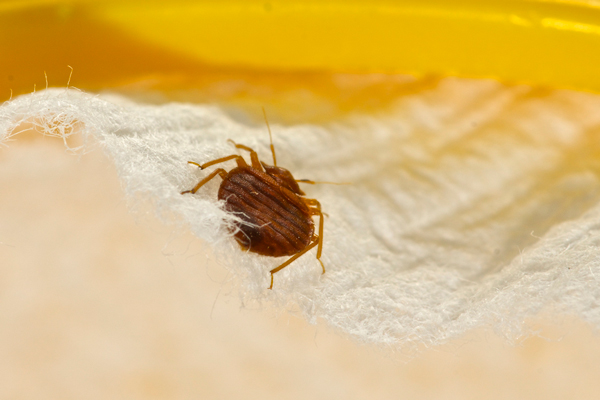Bed Bug Prevention for Travelers
By Chris Williams on January 15, 2014.

Bed bugs are here to stay. Despite increased awareness of bed bug infestation, problems continue to surface. High-end hotels, youth hostels, homes, dormitories, daycares, schools, offices, busses, planes, trains, ships, movie theaters, and assisted care facilities have all been affected by bed bugs.
The ultimate hitchhiker needs only to find a safe haven in or on a bag, piece of luggage, or other item and stay put. Once things calm down, the bed bug seeks out a hiding place near the host. Within months a sizeable population can develop and evidence of their activities will become more noticeable. Fecal stains, cast skins, bites, and live insects are a sure giveaway. Now it’s time for a complete bed bug job, a time-consuming and costly procedure involving cleaning, inspection, and thorough treatment.
Preparation is critical for successful bed bug control. The best way to manage bed bugs is to never get them in the first place, which is sometimes easier said than done. I have put together a list of tips for the traveler trying to avoid the ultimate hitchhiker. World travel and endless migration between the continents, facilitated by air and rail travel at higher speeds and volumes than ever before in human history, have created the perfect environment for the spread of bed bugs. Large cities, sprawling suburbs, and adjacent slums are reservoirs of bed bug activity from which spring ever more new infestations. With this in mind, we must take precautions when traveling.
Baggage such as suitcases, carry-on bags, handbags, and back packs need to be handled with care to prevent the transportation of bed bugs. Use smaller suitcases and bring only what you will need for the trip. Toiletries and small items should be packed in clear Ziploc bags for inspection. Clothing or other items may also be packed in larger Ziploc freezer bags. Several garbage bags with cinch type closures, large enough to fit luggage items, should be packed as well. Never unpack, especially on beds, and avoid dressers if at all possible. Keep luggage and handbags in a garbage bag, away from beds.
When not using the bathtub/shower, place bagged luggage, etc. in the bath tub. Dirty clothing and shoes should be bagged and kept away from beds. A small, bright flashlight is also a great thing to pack. A brief inspection upon entering a room can shed light on the current bed bug situation. Fecal stains and blood spots are fairly easy to see with a light, as are the adult bed bugs themselves. The skirt around the bed frame is seldom cleaned and may have fecal stains or other evidence. Check behind the head board, the lower edge of the mattress piping, and the bed side stand with drawer. If live insects or stains are noted, kindly ask for another room or find another place to sleep.
When it’s time to go, inspect personal items, un-bag luggage outside the room, and save the bag. During travel, the baggage or handbag may come into contact with another infested item or wandering bed bug on the bus. Warm luggage is better than cold luggage during transfers or in cargo bins. Save the bags for when you get to your car, if that’s the last transit before getting home. Bag up luggage and other items on the ride home.
Once home, don’t bring bags inside yet. Re-inspect toiletries, and other Ziploced items as they are unpacked outside or in the bath tub. Place all clothing in the washer, on Hot setting, and then in the dryer on the highest setting for at least an hour.
Finally, remove smaller suitcases from bags and place in the dryer for an hour on high. The temperature must reach above 125 degrees to kill all stages of bed bugs. If the right precautions are taken, bed bugs will never make it to your bed! If you do suspect bed bugs are a problem call a Pest Control Professional for a proper identification and treatment.